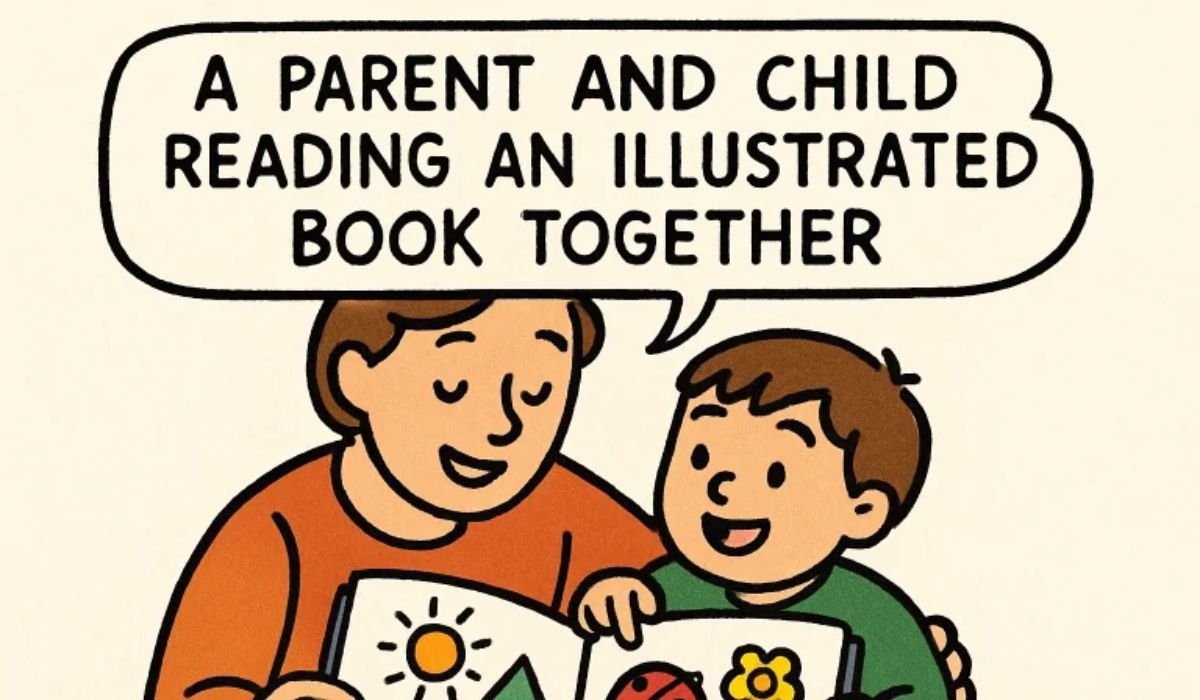Key Takeaways
- Illustrated books provide visual context that aids in understanding and retaining new vocabulary.
- They support the development of narrative skills and comprehension through engaging storytelling.
- Shared reading experiences with illustrated books strengthen parent-child bonds and promote social-emotional growth.
Illustrated books play a crucial role in children’s speech and language development by offering engaging learning experiences through vibrant illustrations and relatable narratives. They facilitate early vocabulary acquisition, stimulate curiosity, and promote effective communication. As visual aids, illustrations enhance understanding and retention of new vocabulary, linking visual stimuli with auditory information during critical developmental years. Shared reading sessions foster emotional bonds between children and caregivers. Experts emphasize the value of reading aloud and picture-centered storytelling, both of which significantly contribute to cognitive and social development. To explore more about how illustrated stories support communication skills, visit the last link in speech therapy, where you’ll find resources designed to inspire literacy and language learning in children. Illustrated books also encourage children to express themselves creatively, as they often imitate characters, sounds, and phrases they encounter in stories. This active engagement naturally and enjoyably strengthens both expressive and receptive language skills. Ultimately, illustrated stories lay the groundwork for lifelong learning and confident communication, making them an invaluable part of every child’s early development journey.
Visual Context Enhances Vocabulary Acquisition
Long before children recognize letters or words, they interpret the world through images. For young readers, illustrations are not just embellishments; they are the primary means by which new concepts and vocabulary become tangible and memorable. Illustrations in children’s books serve as visual scaffolds, helping children connect new words with familiar or newly discovered images in their environment. Well-crafted illustrations anchor a story’s meaning and give children the confidence to repeat new words, ask questions, and describe what they see. These visual associations naturally and positively support emerging communication skills, reinforcing language acquisition. Over time, this process fosters a love for books and helps cultivate a robust vocabulary that forms the backbone of literacy and academic achievement.
Developing Narrative Skills and Comprehension
Illustrated books provide more than just visual aids; they are essential for developing narrative skills, particularly among pre-literate and early-literate children. The interplay between images and text enables children to decode story events, infer meaning, and sequence actions even before they can formally read. This ability to “read” pictures builds comprehension skills as children connect plot, setting, and character emotions through visual storytelling.
As noted by the American Library Association, consistently engaging children in picture-based discussion builds the foundation for critical thinking and comprehension, allowing them to actively participate in storytelling, ask meaningful questions, and predict outcomes.
Shared Reading Strengthens Social Bonds
Regular shared reading sessions create strong family connections while boosting a child’s speech and language skills. The American Academy of Pediatrics emphasizes that reading together in early childhood is key not just for brain development but also for fostering social-emotional connections and healthy relationships. As children listen to stories and interact with caregivers, they internalize language patterns, rhythms, and expressive tones that set the stage for successful communication later in life.
Enhancing Phonological Awareness
Illustrated books frequently employ creative wordplay, rhyme, and repetition, which are essential tools for developing phonological awareness—the capacity to hear, identify, and manipulate the individual sounds in words. When caregivers read rhythmic and repetitive passages, children practice recognizing sound patterns, syllables, and rhymes, all of which are crucial for future reading and writing success. These playful language features encourage children to participate, recite along, and become aware of the precise nuances in spoken language.
Encouraging Expressive Language
Wordless picture books hold a unique place in improving expressive language skills. Without written text to follow, children must interpret the illustrations and narrate the story using their own words. This open-ended storytelling practice encourages children to elaborate on details, expand their vocabulary, and experiment with various sentence structures. Speech therapists and educators utilize these books strategically to encourage conversation, imaginative thinking, and confident expression—particularly among children who are reluctant to speak or who are developing language at varying rates.
Building Cultural Literacy
Illustrated books serve as a powerful means of introducing children to diverse cultures, backgrounds, and perspectives. Through stories set in different lands or featuring characters from various communities, children expand their understanding of the world, develop empathy, and foster social awareness. Books that depict a range of experiences help every child feel seen and valued, while also opening a window to the broader world, encouraging curiosity and acceptance.
Practical Tips for Parents and Educators
- Choose books with clear, engaging illustrations that directly support the text and story.
- Prompt children to describe images, guess what might happen next, and discuss characters’ feelings or actions.
- Include stories from diverse cultures and perspectives to foster a well-rounded worldview.
- Leverage wordless picture books as a springboard for storytelling and expressive language.
In summary, illustrated books provide comprehensive support for language development, combining enjoyment and education to lay a foundation for lifelong communication. By incorporating illustrated reading into daily routines, parents and educators can nurture confident, curious, and compassionate learners ready to thrive in a diverse and ever-changing world.
YOU MAY ALSO LIKE: Why Every Tech Professional Needs eBooks and Success Blueprints for Growth











